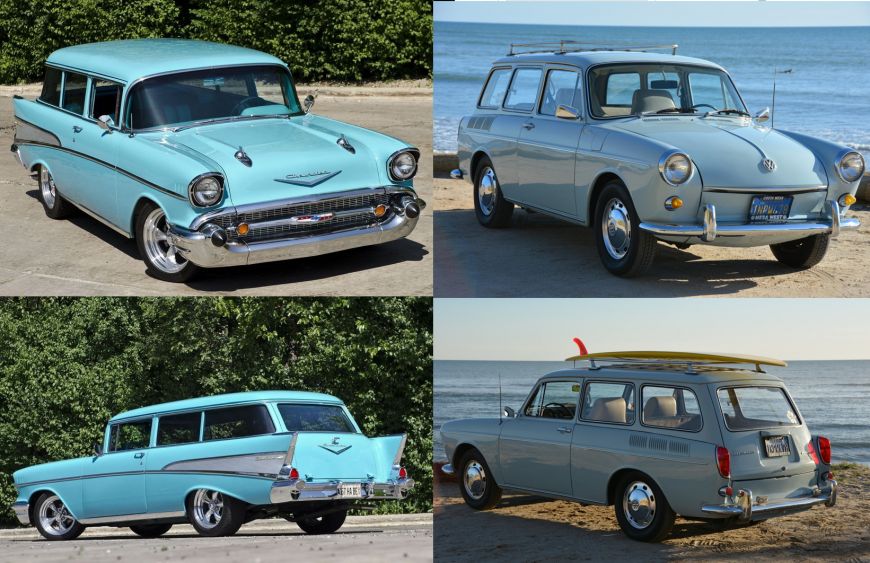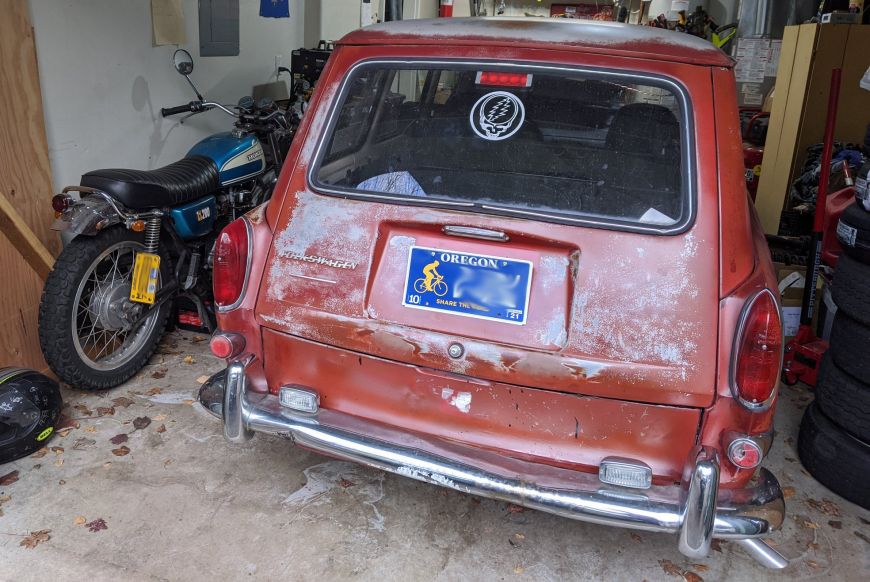I never understood Don Henley's "Deadhead sticker on a Cadillac" lyric. I always envisioned a low-riding 60s Caddy with a wild custom paint job and a large Steal Your Face decal perfectly in the middle of the back window. Not out of place at all, in my mind.
But that was because Don Henley had a different idea of Cadillacs than I did. For his generation, the Cadillac meant the illusion of success. Driving a Caddy signaled, "I've made it and I don't have to work any more." The men who drove Cadillacs in the 70s were the same men who got weekly manicures, and don't own a wrench set. Don Henley's Cadillac was a very different reality than the led sleds and low riders I grew up reading about and seeing on TV.
I hadn't considered any of this when my mind started to wander away from my current project car - a 1967 Volkswagen Type 3 "Squareback" station wagon with an all Miata drivetrain - and towards what is considered the most legendary station wagon of all time: the '57 Chevy Nomad. Or any model from the Tri-Five Chevy lineup. AKA The Baby Cadillacs. I guess my thinking was that if my current project car could no longer hold my interest, then I better just go for the most iconic classic car available. That way I would have to be satisfied. Right?
Thoughts of being unfaithful to your project car, while deep in the ugly process of hacking it together (in my case), is a totally normal step in the process. And so I began watching episodes of Jay Leno's Garage and surfing through the forums of trifive.com to learn more about these Chevys.
But late one night, I came across a thorough yet painfully dry documentary called "Great Cars: The Hot Ones" that examined the Tri-Five Chevy and the era they were born in. Here's some of the phrases that stood out to me when the film described what the legendary car represents:
- The parade of progress
- Consumption was God
- Unprecedented, glorified growth
- Times were good and the future was bright
- Bigger meant better
- White, male, protestant.
I finally understood Don Henley's lyrics. A deadhead sticker on a car that represents that time in history would not make any sense! Unsustainable growth and capitalism as shiny as a Chevy chrome bumper, does not mix well with dropout culture.
The future is not bright, not any more. Bigger does not mean better, not to me. And, lastly, the GM company man credited with building the car is Ed Cole - a man with two first names! And my mother taught me to never trust anybody with two first names. So the Chevy project idea was dead to me.
At this point it should not surprise the reader to discover that on my '67 Volkswagen project, there is a large Grateful Dead sticker on the back window, right in the middle. The chrome is badly rusted and mangled, and the paint is heavily faded down to the primer and will remain that way.
Because that is the kind of car that I want to represent myself as I drive down the road. A car from 1967 - the era when the biggest, shiniest fucking cars in the showroom had finally started to give way to the practical, economical, every-day-man imports from Germany and Japan.
And that is why there's a Deadhead sticker on my car. Oh, and because I like the Grateful Dead's music.
"Don't look back you can never look back."



